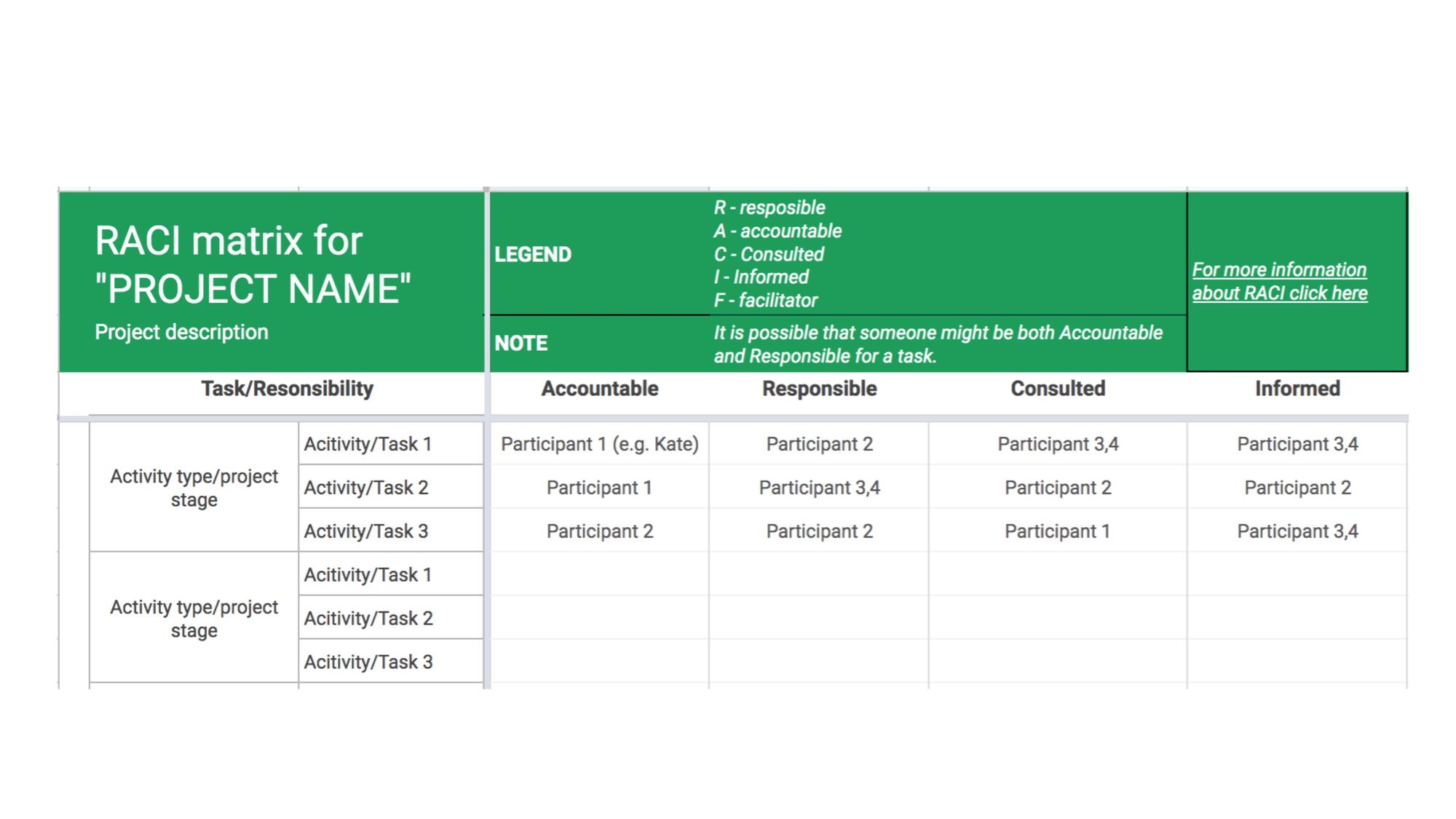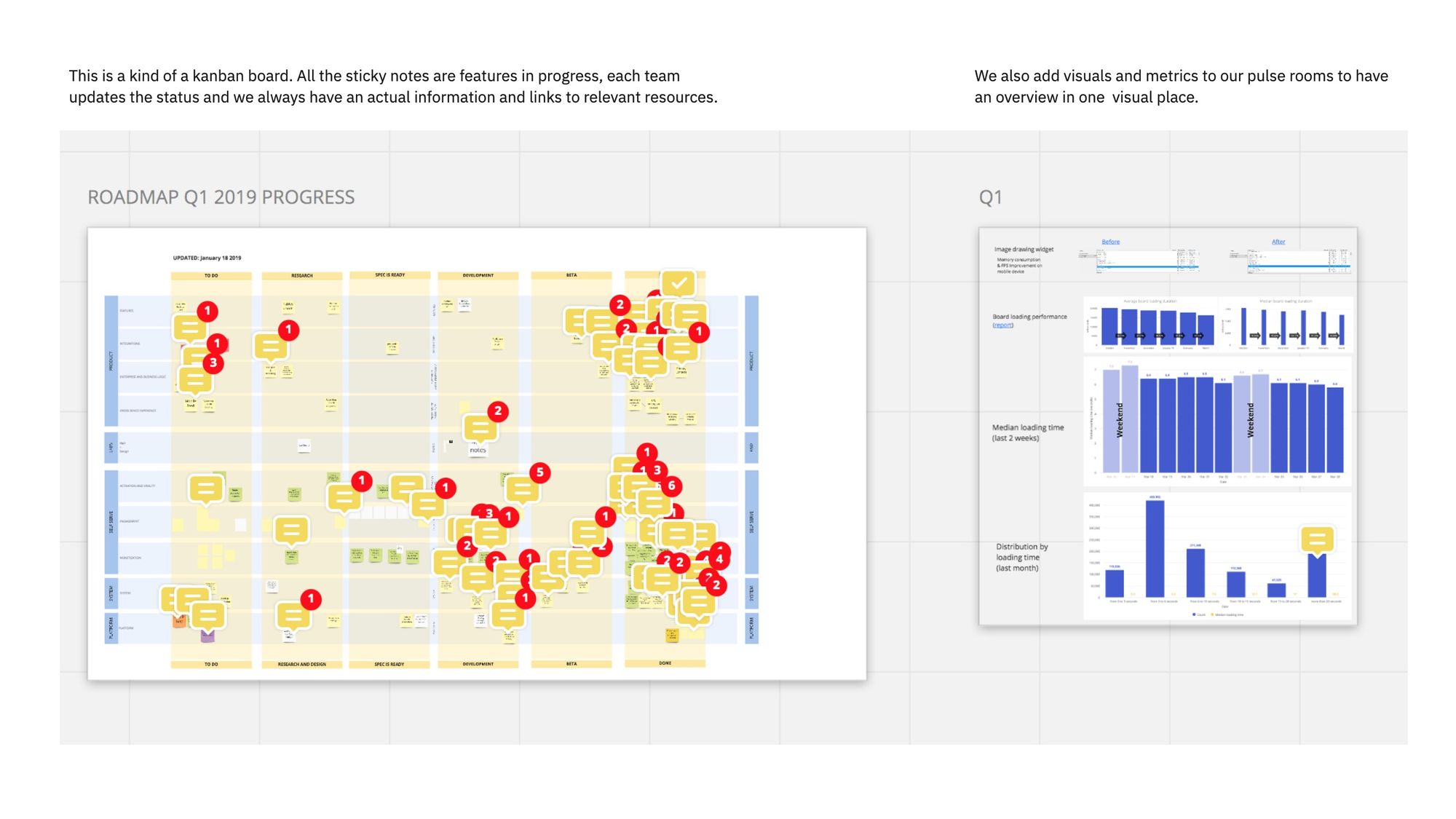Team alignment practices in a growing product company
For the leadership, it’s really Important to find the right balance between autonomy and alignment to help teams stay autonomous and moving in the one direction simultaneously. Miro's Head of Product, Anna Boyarkina discusses what it takes to have true team alignment while scaling your product.

Every product leader wants to create products that make an impact. When a company finds its product/market fit, it starts to grow and scale. The initial single product challenges of day 1 are replaced with the problems of aligning different products with different teams and different contexts. This leads to the challenge of finding the right balance between autonomy and alignment. On the one hand, autonomy is essential when you need your team members to make decisions and move things forward fast but on the other hand, alignment is critical to ensure all teams are moving towards the goals of the company.
Getting this balance right is one of the key challenges for product leadership.
Alignment suffers as companies scale
Currently Miro is a company of 200 talented people located in four hubs — Amsterdam, Los Angeles, Perm and San Francisco. As we have grown over the past 9 years we have found staying aligned more challenging:
- When you start and your team is small, you all have direct connections with each other and basically know the same context. Given the team size, you wear several hats which gives you broad business and product context. However, when the team grows, the number of possible connections between people grows exponentially and people begin to specialise more, which shrinks the broader business and product context.
- We started our 2nd hub back in late 2015. When the team doesn’t sit in one place, people do not have a chance to have water cooler talks with the information flowing and overall communication becomes harder. If you're in different time zones, the challenge becomes even bigger.
- As we grew, our team became more diverse, which is positive from a product perspective, but challenging from an alignment perspective because the same thing can mean different things for different people. People always have a reality distortion field which affects their perception of conversations and communications, which can lead to misunderstandings around goals, strategies, feedback — anything.
- Functions scale. For product companies it’s typical that the company in its early stages equals product. When the company is growing, a lot of new functions appear: marketing, sales, operations, legal etc. For product people, it’s really important to recognise that and seek alignment as all these functions are interconnected and together help the business grow.
Misalignment downsides
The word ‘misalignment’ itself doesn’t sound like something positive, but it would be great to see what real problems it causes within organisations. Misalignment can occur on different levels and around different topics — i.e. strategy, roadmap, communication principles, roles and expectation etc., and each type of misalignment causes some issues that need to be addressed. This list is based on both our own experience at Miro and Miro customers feedback (companies use Miro to overcome some teamwork challenges including team alignment).
- Execution slows down. When people are not aligned, the outcomes achieved can be much lower as teams do not equally understand the context, value, timelines and importance of different projects and initiatives.
- Missed opportunities. If the teams and individuals are not aligned, they possibly do not share relevant information, and it leads to missed opportunities.
- Communication overload. Not having a single picture in each head makes people ask for context here and there, and hence it leads to communication overload.
- Uncertainty. When the teams or individuals do not have a shared context, vision and goals, it can lead to uncertainty and a lack of confidence which eventually results in poorer performance.
- Culture. When teams are focused on different things and consider different things important, it weakens the company culture and in the longer term affects sustainability and performance.
Practices that help teams reach alignment
Over the past few years we have developed practices that help our teams move forward and stay aligned. In this post I’ll share examples related to the company and product organisation specifically, but a lot of tactics practices can be applied to other functions as well.
Alignment on vision, strategy, values, roles and responsibilities
Storytelling and painting a picture
A story, which is easy to remember, is a great way to align everyone around vision and plans. There is a book called «Double Double» written by Cameron Herold, and it describes this exercise called Painted Picture. Creating and sharing this vision, which should be clear and inspirational, can help you align the whole company or team around it. The trick is to share where your product and company will be, not how to achieve this. We started this practice this year, and so far I've been very impressed with the results and alignment it provides.
Offsites
When the team is distributed,it's hard to meet and discuss things in person, build trust within the team and have conversations flowing. To help our distributed team feel more connected and engaged we hold a company-wide offsite once a year. Leadership and functional offsites happen more often — once in a quarter on average. The main goal of these offsites is to spend time together solving the problems and staying away of operational work for a while. Here’s a great post that describes value of the offsites at Miro.
Cross-functional workshops
Different functions in the company need to be aligned on roles, goals and processes etc. The need may be different depending on the problem and task you are solving, but overall principle here is to gather people from different functions together and help them/facilitate do something together.
Building core principles
Sometimes it’s impossible to have a how-to guide for many tasks, but it’s possible to have values and principles that help make decisions. On a company level we have our values, on a product engineering level we have our principles that guide our work and inform our roadmap.

RACI/DACI matrix.
For alignment on roles and responsibilities we are using RACI framework

Planning and execution
Strategic sessions
For planning on a high level we do either a 1 or 2 day strategic session. Sometimes we have an external facilitator to help us with guidance. Here’s an example of strategic session agenda and outcome

Planning around shared goals
At Miro we are using OKRs at a company and team level, and this helps us a lot to focus on what matters most and allow everyone to contribute to these goals. To speed up planning, we usually discuss our Objectives and KRs on the call or in-person offsite, and the initiatives are brainstormed asynchronously in a shared space (Miro board).
Traction meetings and tools
To align on progress, you need to have some cadence on reviewing what has been done, what blockers you have and how far you are from achieving the goal. We have a weekly meeting for roadmap traction and bi-weekly meeting for OKR traction.
Product review and Launch review meetings
For the product team and product stakeholders we have 2 special events — Product review and Launch review. For these events the goal is to align different product and customer facing teams on the product design and launch plan.
Informing about goals, initiatives and progress
All-hands meetings
At Miro we have company-level all-hands meetings as well as department level ones. For Product engineering team we basically have 2 meetings of this type per quarter — at the beginning of Q to share the results and plans for the quarter and in the middle of the quarter to share the progress. For sure, if we have any important strategic updates, the event can be done ad-hoc.
Shared space with big picture, pulse rooms — visual source of truth.
At Miro we are big believers in the fact that big picture view on goals, projects, initiatives helps not only managers to keep the finger on a pulse, but also helps teams and individuals stay aligned with the holistic picture instead of narrow initiatives. For instance, we have a Product pulse room, which contains product org structure, information about main processes, all the initiatives with actual status, and everyone in the company has access to it.

This board is embedded into Confluence, which we are using as a knowledge base.
Up-to-date knowledge base.
When the company is getting bigger, the number of initiatives is growing, and it’s essential to have a knowledge base/internal wiki with all relevant information. We are using Confluence + Miro for that purpose. One of the important things that we included into our culture is meeting notes. It’s not a surprise, that with the growth of the company the number of meetings is growing, and we try to reduce the time people spend on meetings. Having the meeting notes and meeting recordings, you don’t need to attend a meeting if it’s just an FYI meeting for you and you are not a person who is making a decision or involved in the process of decision making.
Proactive informing through email, corporate messengers and other company channels.
Having all information available is not enough — these days there are a lot of distractions and focuses for the team members, so proactive informing about important things makes a huge difference. For instance, we have a Slack channel called #product_news, where we post all the product updates and customer facing teams can easily gather the necessary information.
Demos. A demo paints a thousand words.
At Miro, we have an event called Friday wins — it’s focused on product demos, launches and improvements. Each week every scrum team shares their wins — and sometimes wins do not occur, and we share learnings.
Conclusion
We as a team, or team of teams, feel much stronger when we have a shared understanding and a shared goal, but it’s also important to stay aligned with this goal during execution process and results evaluation. Building a habit around alignment with some of the practices, processes and tools described can help your team stay focused and be engaged in the processes that move company and the team forward. All the practices described can be applied to co-located, distributed and remote teams. If you have any practices that help your team stay aligned, please share at anna at miro.com.
